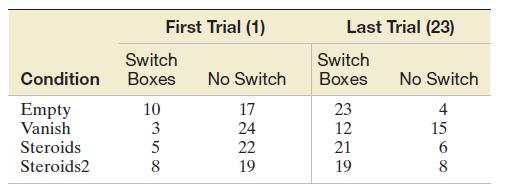Examining the Monty Hall Dilemma. In Exercise 3.195 (p. 209) you solved the game show problem of
Question:
Examining the “Monty Hall Dilemma.” In Exercise 3.195
(p. 209) you solved the game show problem of whether to switch your choice of three doors, one of which hides a prize, after the host reveals what is behind a door that is not chosen.
(Despite the natural inclination of many to keep one’s first choice, the correct answer is that you should switch your choice of doors.) This problem is sometimes called the
“Monty Hall Dilemma,” named for Monty Hall, the host of the popular TV game show Let’s Make a Deal. In Thinking &
Reasoning (July, 2007), Wichita State University professors set up an experiment designed to influence subjects to switch their original choice of doors. Each subject participated in 23 trials. In trial 1, three (boxes) representing doors were presented on a computer screen; only one box hid a prize.
In each subsequent trial, an additional box was presented, so that in trial 23, twenty-five boxes were presented. In each trial, after a box was selected, all of the remaining boxes except for one either (1) were shown to be empty (Empty condition),
(2) disappeared (Vanish condition), (3) disappeared and the chosen box was enlarged (Steroids condition), or
(4) disappeared and the remaining box not chosen was enlarged (Steroids2 condition). Twenty-seven subjects were assigned to each condition. The number of subjects who ultimately switched boxes is tallied, by condition, in the following table for both the first trial and the last trial.
a. For a selected trial, does the likelihood of switching boxes depend on condition?
b. For a given condition, does the likelihood of switching boxes depend on trial number?
c. On the basis of the results you obtained in parts a and
b, what factors influence a subject to switch choices?
Step by Step Answer:

Statistics Plus New Mylab Statistics With Pearson Etext Access Card Package
ISBN: 978-0134090436
13th Edition
Authors: James Mcclave ,Terry Sincich






